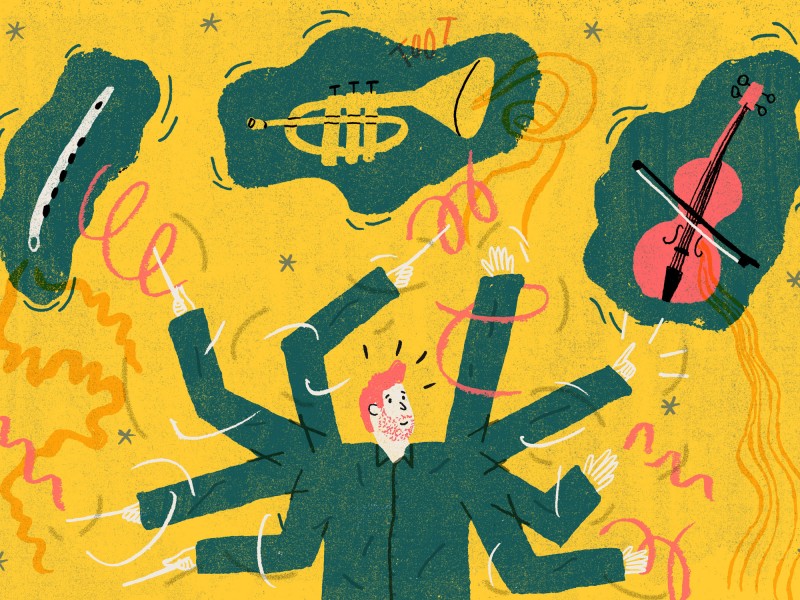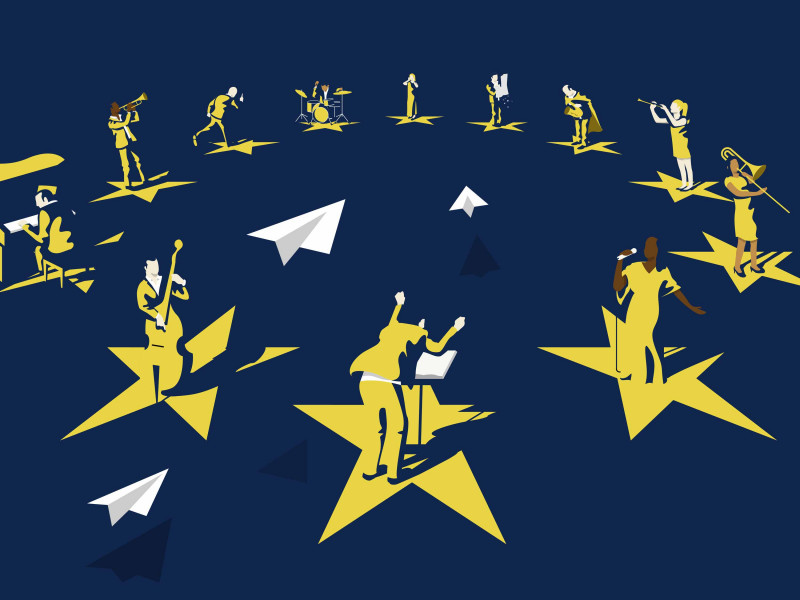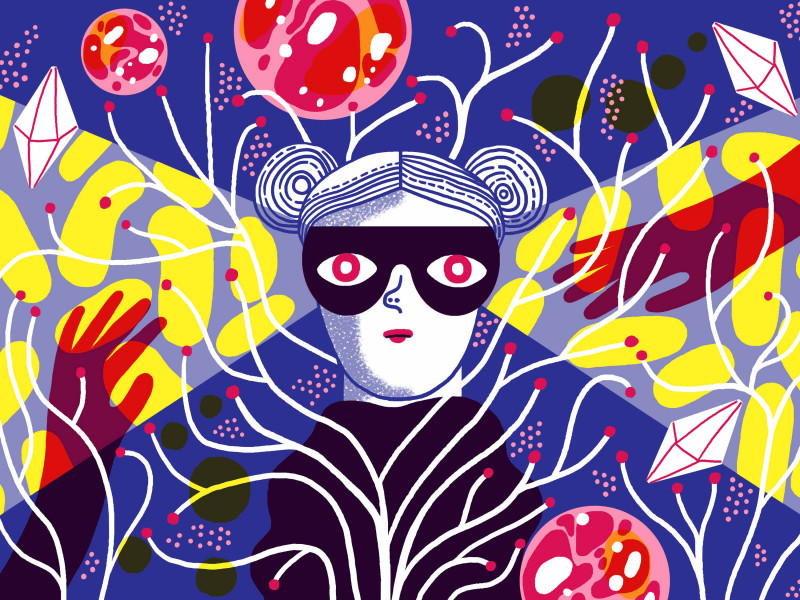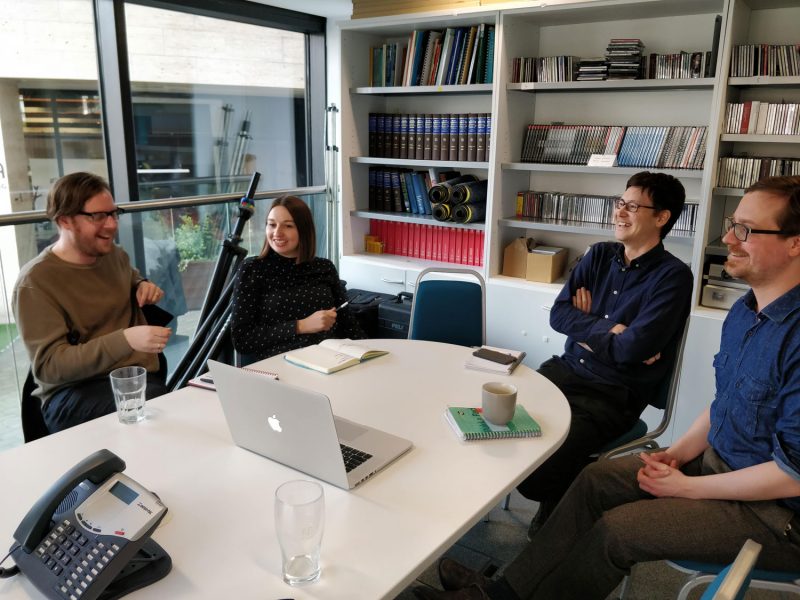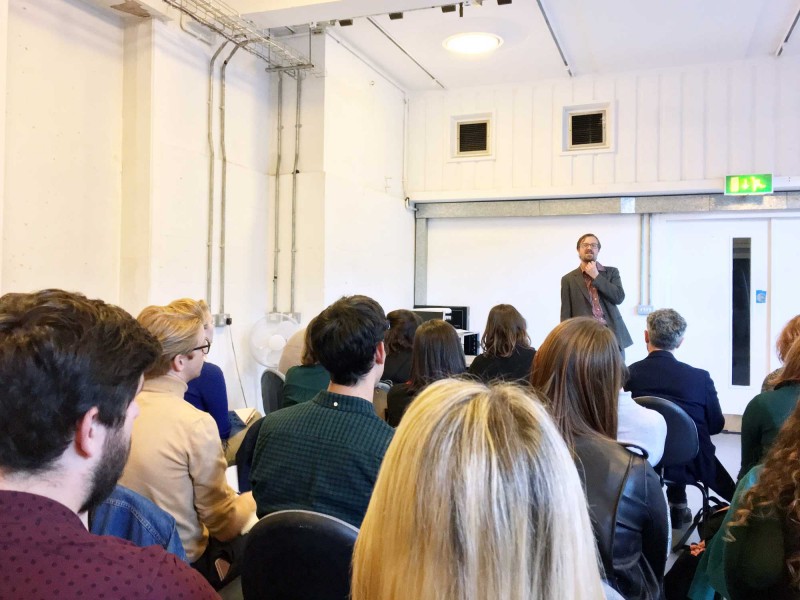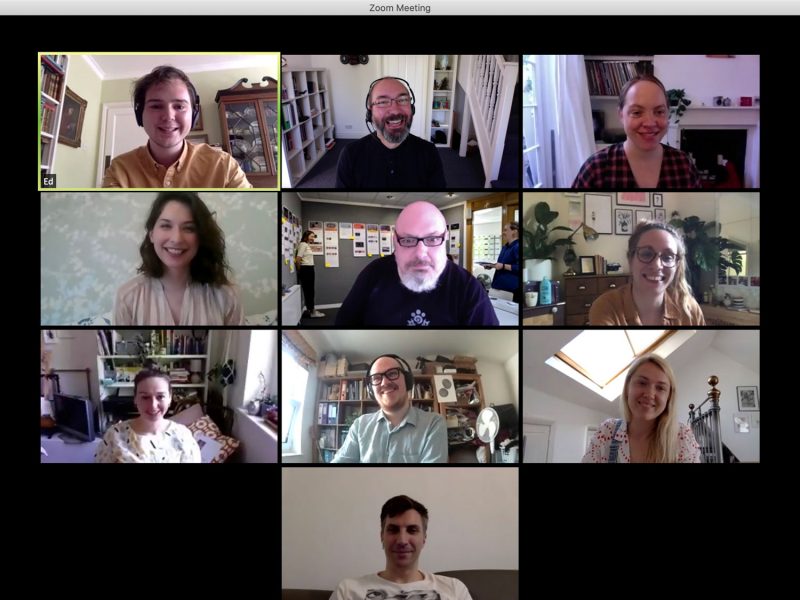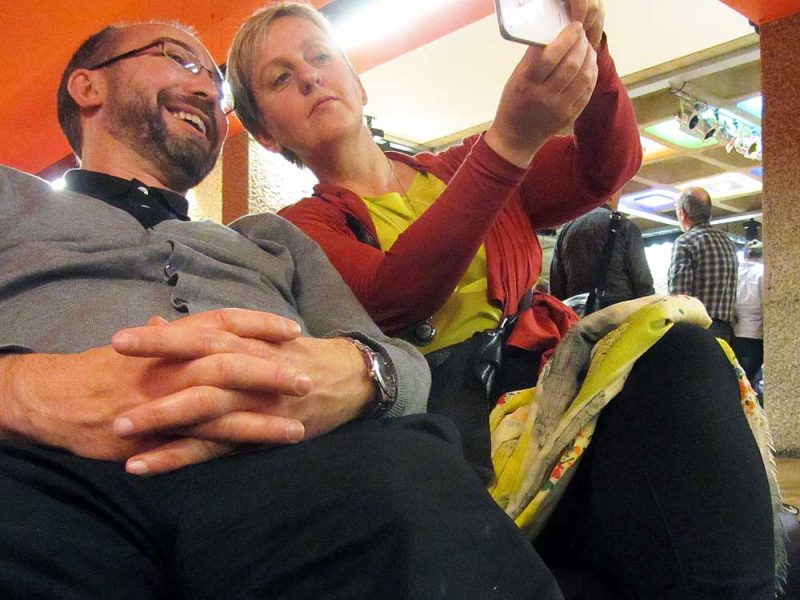For our February Cog Night, we ventured into Peckham to see members of the Orchestra of the Age of Enlightenment perform at the CLF Art Cafe. Jack tells us what it was like.
The Night Shift at CLF Art Cafe
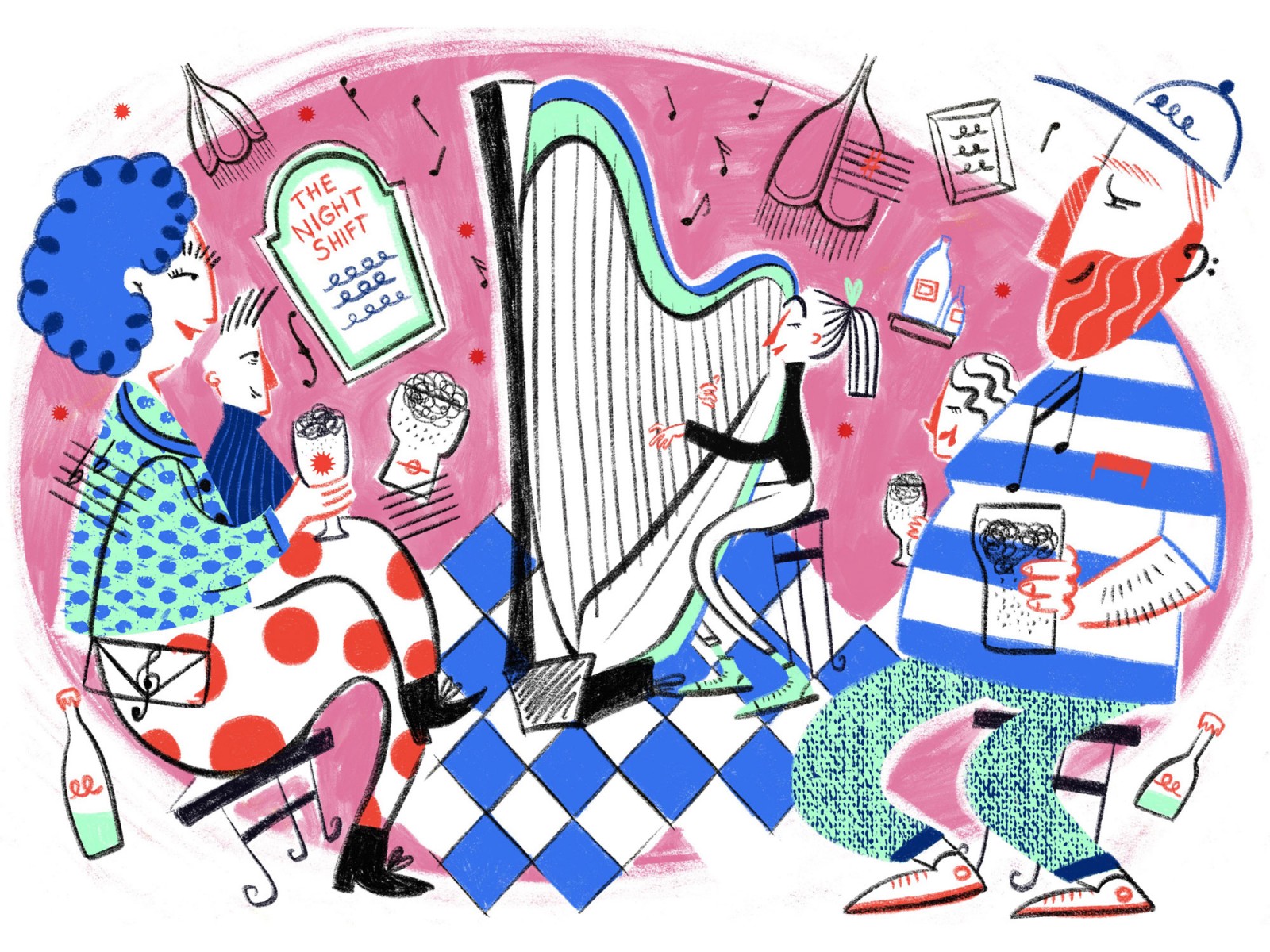
We recently started working with the Orchestra of the Age of Enlightenment (the OAE), so we’ve been going to lots of their concerts and events to see them live. We’ve been keen to see them perform one of their Night Shift events, as they’re billed as being quite different to a performance in a concert hall.
For those of you who haven’t come across the OAE before, they’re a bit different to other orchestras. Rather than being led by a principal conductor or an artistic director, it’s the players of the orchestra who guide their artistic direction. It also means they have they have the flexibility to work with lots of different conductors and artists.
The orchestra play on period-specific instruments – which means, for instance, that violins use ‘gut’ strings or they might be an instrument which isn’t usually found in an orchestra, such as a theorbo.
The Night Shift is a series of performances in informal environments – usually pubs or gig spaces. The idea being to break the rules of the formal concert hall setting and enable audiences to enjoy classical music in a more relaxed atmosphere.
As you might imagine, it would be quite hard to get a full orchestra into a pub, so The Night Shift presents smaller ensembles.
At the beginning of the month, I’d seen the orchestra in the Royal Festival Hall at the Southbank Centre, so I was interested to see how the performances might differ between the two spaces.
The CLF Art Cafe is in Peckham’s Bussey Building, a creative hub of bars, clubs, music studios, shops and co-working spaces. There’s a good view of central London, particularly at dusk, if you pop up to the top of the building. We arrived a bit early so we nipped down to a basement bar, in the dark, for a quick drink before the doors opened.

The Cog team having a drink in one of the Bussey Building’s basement bars
The doors opened at 7.30pm and we headed upstairs to the venue. We surrendered our hands to being stamped – the ink is still ever-so-slightly visible on my hand, 24 hours later, despite rigorous washing. This was definitely a gig atmosphere, very different to a concert hall.
The space had been decorated with projections and a massive mirrorball – not something you see in many concert halls. There were a few rows of chairs laid out, though most people seemed to stand, nearer to the Bar. We grabbed some drinks and nattered between ourselves, waiting for the music to begin.
Before the OAE performed, we were treated to a support set by harpist Alice Phelps. Everyone very quickly hushed and enjoyed her folk-inspired songs.
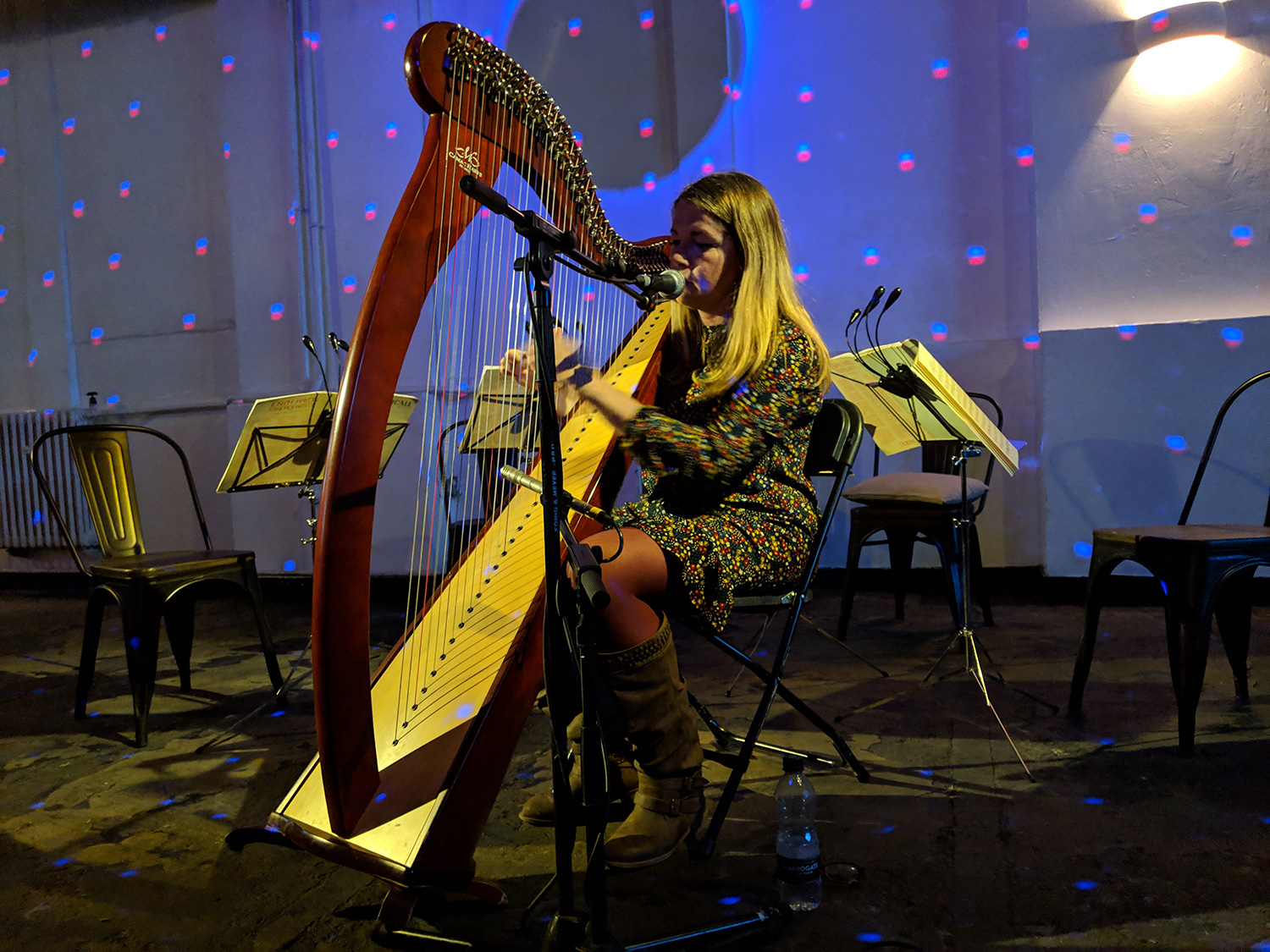
Jack’s front row view of Amy Phelps playing the harp
What we quickly learnt is that when you’re in a ‘bar’ environment, everyone’s a lot more relaxed, and whilst it’s usually rude to move about or talk through performances in concert halls, that wasn’t really the case for this environment.
There were a few moments where the background noise of chatters seemed distracting from the music, but the noise seemed to almost self-govern itself (with the odd ‘hush’ amongst the audience focussed on the music).
After Alice, four members of the OAE came on stage (well took to the floor, they performed amongst us rather than on stage), adjusted the tuning of their instruments, and turned to the right pages of their manuscripts.
One of the violinist, Matthew, picked up a microphone and welcomed us to The Night Shift. He introduced the music they were about to play and told us that there would be a break before the second set. He also talked to us about the composer, Haydn, and chatted about him as a very down-to-earth character – a man a little too obsessed with facts and figures, who had suddenly become very famous late in life.
That introduction relaxed the audience even more and Matthew got a few laughs out of us as he jigged around the microphone lead.
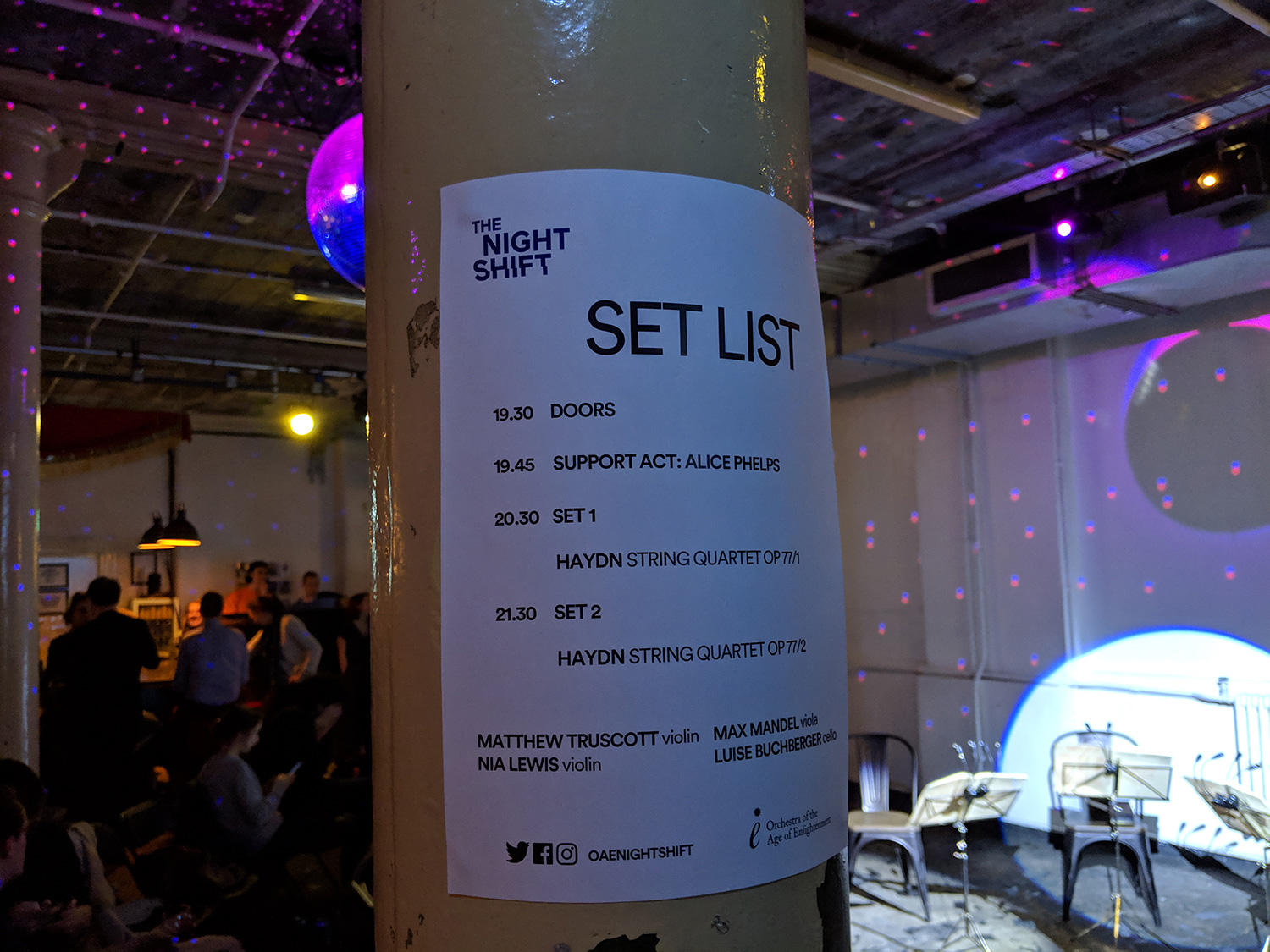
Who needs a programme when you’ve got a set list?
Halfway through the first set our team introduced a bit of extra drama to the evening. One of us felt a bit lightheaded and stumbled towards the (concrete) floor, caught by another team member on the way.
The OAE and venue staff were excellent and rushed to offer assistance, audience members provided bottles of water, and the players paused to check that all was ok – again, not something I’ve experienced in a more formal setting – and, after a quick ‘we’re all good’, they picked up their instruments and carried on, not phased by the interruption. Our colleague was soon recovered and nobody batted an eyelid at the now small group of people sitting on the floor.
Throughout the performances, I noticed that, without a conductor, the four players worked silently to guide each other through the music. They hinted at pauses with their facial expressions, body movements and feet. It was like they were having a conversation, but speaking through music and movement.
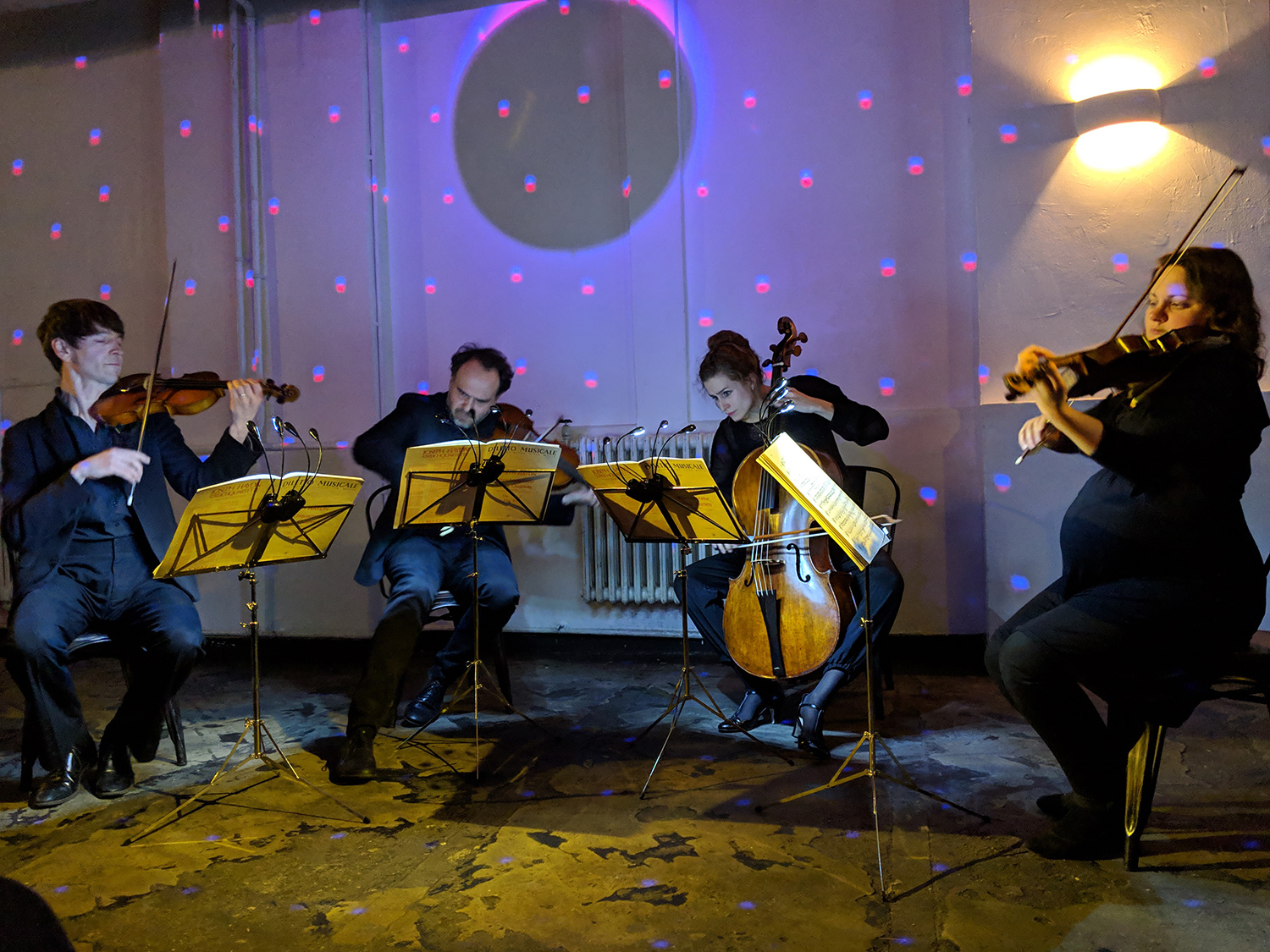
Jack’s front row view of the quartet of string players from the OAE playing music by Haydn
At the break, the players didn’t just go ‘backstage’ – I’m not even sure there was a backstage. Instead they chatted with the audience and had a drink.
I’m not really mentioning the music, although truthfully it was brilliant. And I’m not quite sure I can form the words to describe it.
I really enjoyed the informal, laid-back atmosphere, the fact that I could have a can of booze and chat, and obviously the fact that they had a giant mirrorball.
My advice is to book a ticket, grab a pint, and see what happens at The Night Shift (or any other OAE performance) for yourself.
Illustration by Moira Zahra for our Cultural Calendar.


